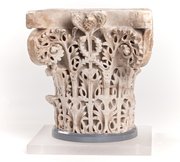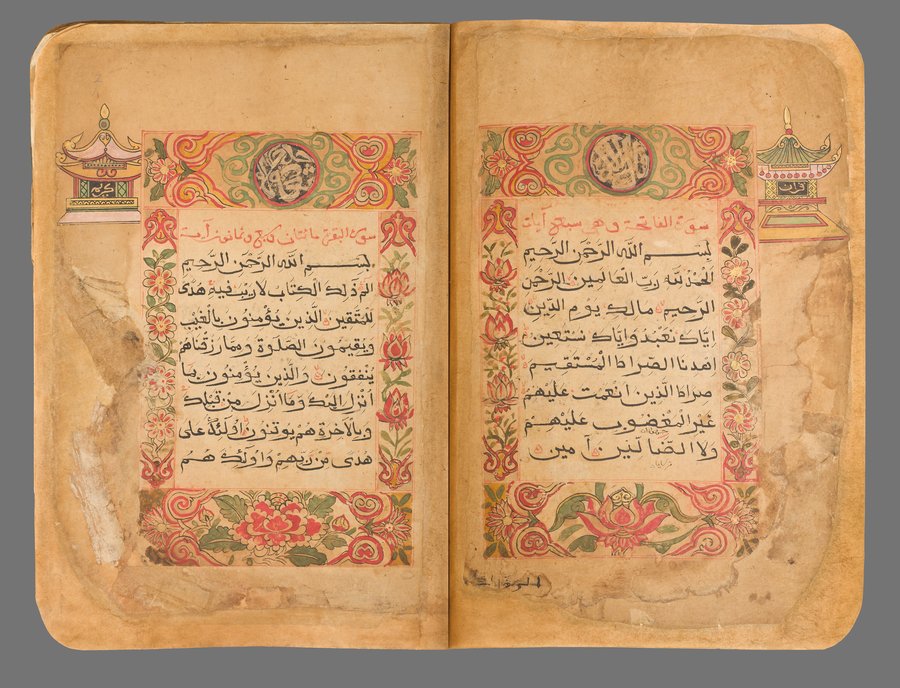
Copy of the Qur'an from China
Museum of Islamic Art
- Title:
- Copy of the Qur'an from China
- Production place:
- China
- Date:
- 1600 - 1900
- Period:
- 17th century CE
- Title:
- Copy of the Qur'an from China
- Production place:
- China
- Date:
- 1600 - 1900
- Period:
- 17th century CE
- Material:
- Gold, Leather, Paper, Ink, Watercolour
- Technique:
- Bookbinding, Calligraphy, Illustration, Illumination
- Dimensions:
- 34.5 × 23.5 × 7
This manuscript is a fine example of Qur’an production in China, most likely produced during the Qing dynasty (1644-1911 CE), This Qur’an manuscript consists of 297 leaves written in Sini muhaqqaq script, which was distinctive to that region. The use of diacritics and full vocalization is seen in the text; to differentiate, the verses are marked with red circles/dots, and the chapter headings are in red ink indicating the sura and the number of verses. The two pages shown are the opening pages of the Qur’an; the page on the right is Sura al-Fatihah (The Opener) and on the left Sura al-Baqarah (The Cow).
The pages are beautifully bordered with Chinese floral motifs in vibrant colors such as red, green and gold to stand out. Since the latter mentioned pages are the opening of the Qur’an one can notice that at the top of each border there is a round design in swirling letters with the words - قال الله (Allah states) on the left, and - جل جلاله ( The Almighty) on the right. The Chinese pagodas is what makes this manuscript unique as well, the words within the pagodas on each corner say Qur’an Kareem (noble Qur’an).
Since the 2nd century AH/8th century CE, trade played an integral role in the spread of Islam and its culture in China, and Qur’an production became an important aspect of that. Unlike this example, several Chinese Qur’an manuscripts were often produced in thirty-volume books (juz’/ajza') instead of a single volume. The Chinese artistic tradition strongly inspired the style of decoration as many Qur’ans include similar floral patterns and colour schemes, and Chinese symbols such as pagodas and lanterns. This was also a way to make these manuscripts distinctive to their region.



